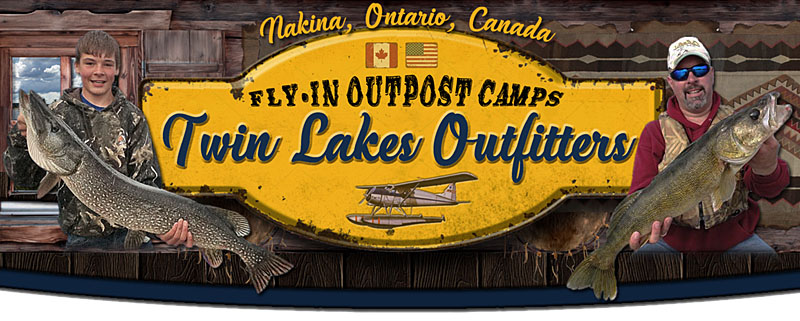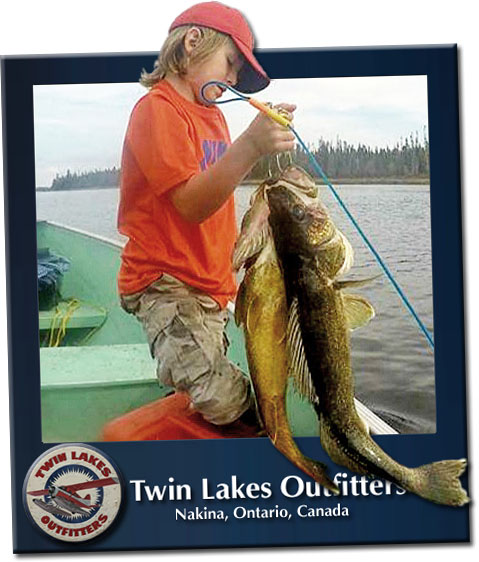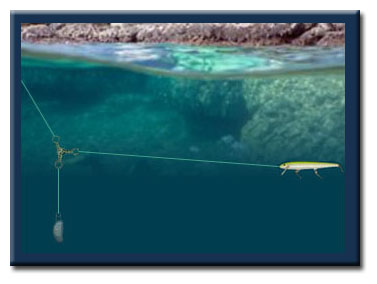



 Early Spring Techniques:
Early Spring Techniques:
In the early spring, the Walleye are right close to shore or congregating around areas with sand like a sand bar or a Wild Rice bed with a sandy bottom. They will also be found in the weeds or around rocky point, which are close to an area with sand. The location of sand is very important because that's where they spawn. They will also spawn in river current. At this time of year the Walleyes are very aggressive and will hit just about any lure.
Walleye Jigs: If you want to fish with jigs, use a 1/8 oz or 1/4 oz jig with a white, yellow, green or black twistertail. You can put a tiny piece of worm or Walleye gullet on the jig to increase strikes but at this time of year it's usually unnecessary. White twistertails are the best and will work all year.
In the spring, the smaller males stay shallow and close to the spawning area. The bigger females tend to take off into deeper water during the day. If you are looking for numbers during the day, jig in the shallow water. If you want to pick up bigger Walleyes, try going a few feet deeper but still in the same area.
Walleye Lures: You can cast or troll with lures along the shore and catch Walleyes. Original Floating Rapalas or Junior Thundersticks in the Silver, Blue or Fire-tiger colors work best. You can also use small crank baits and shallow running shad-raps.
Night Walleyes: In the evening the big females start to come shallow whether it's to return to their spawning beds or feed on minnows along the shore. Big Walleyes do get caught during the day but if you are looking for a 10-pound plus trophy, evening and night is your best chance. Troll really slow and really close to shore or along the weed lines with Original Floating Rapalas or Junior Thundersticks and have lots of line out. You may want to stop the boat and cast if you find a sand bar or sandy bottom that is within close proximity to the weeds that they hide in during the day. Silver, Blue or Fire-tiger colors work best no matter what time of year it is.
Late Spring and Summer Techniques:
Day: When the water starts to warm up, you will find that the Walleyes will go a little deeper or hide in the thick weeds. At this time of year, jigs with white twistertails are the best. You can try other colors but white is what works best in the far north so make sure you bring lots of them. Bring unscented twistertails. The scented Power Baits do not work in the north. Buy unscented tristertails and do not spray scent on your lures. Salted baits do work well in the north and so do salted minnows.
Try jigging straight down in thick weeds in the 5 to 10-foot range. You can also jig off rocky points or shoals where there are drop-offs. If it's windy, then you can just drift and jig over the hot area.
Night: In the evening, the big Walleyes will come out of the deep water and patrol the shoreline for food. This is when you need to troll with small lures like we mentioned above. The difference is during the summer; the females go a lot deeper during the day than they do in the spring.
Deep Water: During the day, the smaller 1 to 4-pound Walleyes will stay shallower. The big trophy Walleye are usually females and will hide in deep holes during the day. You can try fishing deeper for them with jigs but you cannot really cover a lot of ground and fishing deep with jigs is only effective if you find a deep spot where the Walleyes are congregating.
To catch the big trophy Walleyes during the day, you have to fish deep and right off bottom or out in open water but down deep in the thermal layer.
Open Water Walleyes: Sometimes the big trophy Walleyes will stay suspended out in open water and feed on schools of baitfish in the thermal layer. Every lake is different but generally in the north they stay between 15 and 25 feet deep in the open water. You need a depth finder to pick up the schools to determine how deep they are and where they are.
Try trolling deep with Husky Jerks or other deep diving lures. You would need to estimate how much line you need out to be at the depth you want. When you buy a lure, sometimes the manufacturer will have a depth-to-line-ratio chart. Silver and brown seem to be the better colors out in open water. You can also try fire-tiger or blue as they are excellent colors most of the year.
 Walleyes On Bottom: Your very best chance at catching a big trophy Walleye during the day is to back-troll very slowly and fish right down on bottom using a 3-way swivel rig and a worm harness or a floating Rapala / Thunderstick.
Walleyes On Bottom: Your very best chance at catching a big trophy Walleye during the day is to back-troll very slowly and fish right down on bottom using a 3-way swivel rig and a worm harness or a floating Rapala / Thunderstick.
Get a 3-way swivel and tie a 2-foot piece of line to a 1 or 1.5 oz sinker. Then tie a 3-foot line to a worm harness or lure. Then tie your line to the 3-way swivel and lower your line slowly until you hit bottom and then reel up a foot. Make sure you have a nice big worm on your worm harness. If you are using 6-pound test line, you should easily be able to troll 40-feet deep with a 1 oz weight. The thicker your line, the more weight you have to use.
The big trophy Walleyes will be down between 15 and 35 feet. They will more likely be located in deep holes that are close to shore. So if you see a bay with thick weeds and then it drops off really deep, that's where the big Walleyes are hiding.